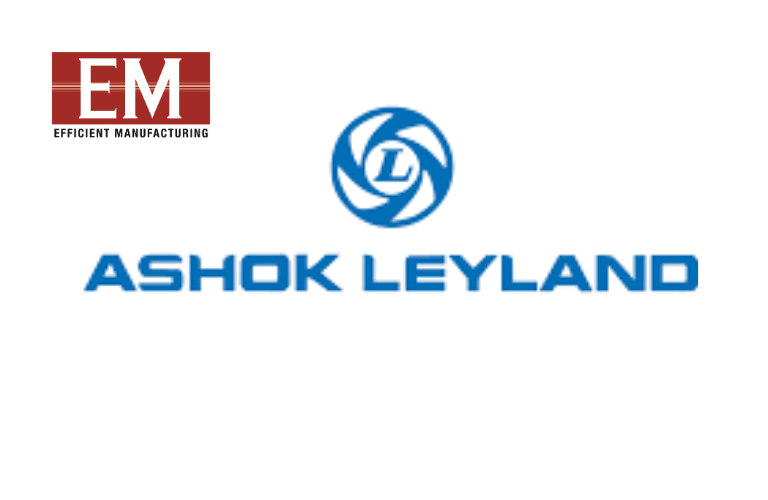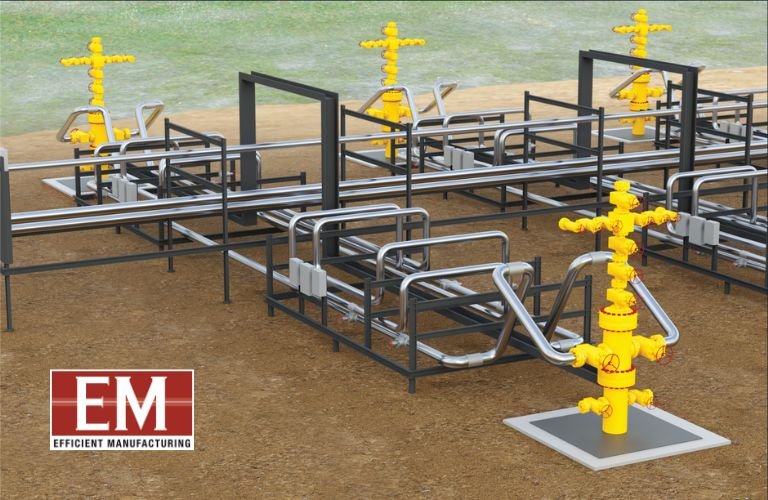With The Indian manufacturing sector is experiencing transformative growth, driven by an increasing emphasis on efficiency, sustainability, and advanced technologies. Parminder Singh, Head, D&M Business, Autodesk India & SAARC in this interview with Efficient Manufacturing, shared his insights on Autodesk’s vision for enabling the industry’s evolution, highlighting key trends, challenges, and innovative solutions. From leveraging AI and cloud technology to addressing skill gaps and fostering sustainability, Autodesk demonstrates how it empowers manufacturers to achieve greater efficiency and innovation.
Q 1) How would you describe the current state of the Indian manufacturing industry, and some of the key trends that are driving the growth in the Indian market:
Indian manufacturing is growing at a fast pace with evolving demand for new technologies and increasing focus on efficiency and sustainability on automotive manufacturing. Some of the key trends in the design and manufacturing industries are:
- AI and Digital Transformation: Autodesk is leveraging AI and machine learning in its software solutions to enhance design capabilities and automate repetitive tasks. This includes tools like Autodesk Fusion 360, which integrates CAD, CAM, and CAE into a single platform.
- Cloud as technology – Cloud technology is a key trend revolutionizing the design and manufacturing industries, enabling greater collaboration, scalability, and efficiency. By leveraging cloud-based solutions, companies can access powerful tools and resources without the need for significant upfront investments in hardware and infrastructure. Autodesk is at the forefront of this transformation, offering innovative cloud-based platforms like Autodesk Fusion. Fusion integrates CAD, CAM, and CAE in a single platform, allowing for seamless collaboration and real-time data sharing among team members, regardless of their location. This not only accelerates the design process but also enhances the quality of the final product. These cloud-powered tools exemplify how we are helping design and manufacturing professionals to innovate, increase efficiency, and create more sustainable products.
- Smart Manufacturing: Autodesk supports the adoption of smart manufacturing practices by providing advanced manufacturing software solutions that integrate with IIoT and other Industry 4.0 technologies.
- Additive Manufacturing: Autodesk offers solutions like Autodesk Netfabb, which supports additive manufacturing processes, enabling efficient and innovative product development.
- Workforce Development: Autodesk is firmly committed to helping solve the skills gap problem and prepare the next generation for the jobs of today and tomorrow. We deliver on this commitment by providing free access to our full portfolio of professional-grade software to accredited institutions. Infact, in November this year, we entered into a MoU with IIT Bombay. The collaboration will combine Autodesk’s industry expertise with IIT Bombay’s leadership in education, research, and innovation. The objective is to train and provide skills to top talent, support India’s growth, and shape the country’s technical and scientific landscape.
- Supply Chain and Product Lifecycle Management: Autodesk’s software solutions, such as Autodesk Fusion Lifecycle, help streamline supply chain management and product lifecycle processes, enhancing overall efficiency.
- Tool path generation on cloud – Autodesk is pioneering tool path generation on the cloud, revolutionizing the way manufacturers approach CNC machining and other automated processes. By utilizing cloud-based solutions like Autodesk Fusion, users can generate, simulate, and optimize tool paths in a highly efficient and collaborative environment.
This cloud-centric approach allows for real-time data processing and sharing, enabling teams to work together seamlessly from different locations. The advanced capabilities of Fusion as platform and Data models leverage Autodesk’s powerful cloud computing infrastructure to perform complex calculations quickly, reducing the time required for tool path creation and iteration. This not only enhances
Q 2) What makes India a unique market for design and manufacturing software compared to other regions?
India represents a unique and dynamic market for design and make industries, characterized by its rapid economic growth, diverse industrial base, and a burgeoning pool of skilled engineers and designers. Several factors make India distinct in this regard:
- Economic Growth and Industrialization: The government’s initiatives like ‘Make in India’ and ‘Digital India’ aim to transform the country into a global manufacturing hub. This indicates high demand for advanced design and make software to support the development of infrastructure, smart cities, and innovative products across various sectors
- Skilled Workforce: India boasts a large and growing pool of highly skilled engineers, designers, and IT professionals. The emphasis on STEM education and a strong tradition in engineering disciplines provide a robust foundation for adopting and leveraging sophisticated design and manufacturing technologies.
- Diverse Industries: India’s industrial landscape is incredibly diverse, ranging from traditional sectors like textiles and agriculture to cutting-edge industries such as aerospace, automotive, and electronics. This diversity necessitates versatile and adaptable design and make solutions that can cater to a wide range of needs and applications.
- Innovation and Start-ups: The Indian market is characterized by a vibrant start-up ecosystem, particularly in technology and manufacturing. Start-ups and SMEs are increasingly adopting advanced tools to innovate and stay competitive, driving demand for high-quality design software.
Autodesk has been at the forefront of empowering designers, engineers, and manufacturers with cutting-edge design and make technologies. Our comprehensive suite of software solutions, including AutoCAD, Fusion 360, and Inventor, are designed to meet the diverse needs of the Indian market:
- End-to-End Solutions: Autodesk provides end-to-end solutions that cover the entire product lifecycle, from conceptual design to manufacturing and production. This holistic approach ensures seamless integration and efficiency across all stages of development.
- Innovation and Customization: Our tools are built to foster innovation and support customization, which is crucial for catering to the unique requirements of different industries in India.
- Collaboration and Connectivity: Autodesk’s cloud-based platforms facilitate collaboration and connectivity, enabling teams to work together in real-time, regardless of their geographical locations which is beneficial in a diverse region like India.
- Educational Initiatives: Autodesk is committed to supporting education and skill development in India. We collaborate with academic institutions to provide students and professionals with access to our software, helping to build a future-ready workforce. We have collaborated with multiple state governments for training and upskilling of their technical workforce.
- Sustainability and Efficiency: Autodesk’s solutions are designed with sustainability in mind, helping businesses reduce waste, optimize resources, and enhance efficiency, aligning with global and local sustainability goals.
Q 3) What are some of the biggest challenges Indian manufacturers face in adopting modern manufacturing practices such as digital transformation?
As the manufacturing sector in India continues to grow and companies aim for overseas opportunities, adopting digital transformation becomes crucial for staying competitive. Here are some key pieces of advice for businesses looking to embrace digital transformation:
- Assess and Define Goals:
- Identify Objectives: Clearly define what you aim to achieve with digital transformation. This could include improving operational efficiency, enhancing product quality, reducing costs, or expanding market reach.
- Conduct a Digital Readiness Assessment: Evaluate your current digital capabilities and identify gaps that need to be addressed.
- Adopt Advanced Manufacturing Technologies: Implement technologies such as CAD/CAM software, 3D printing, IoT, and automation to streamline production processes and enhance precision.
- Leverage Cloud Computing: Use cloud-based platforms for better collaboration, data storage, and access to advanced analytics and computing power.
- Focus on Skill Development:
- Train Employees: Provide training and upskilling opportunities for your workforce to ensure they are proficient in using new digital tools and technologies.
- Foster a Culture of Continuous Learning: Encourage a mindset of continuous improvement and learning within your organization.
- Innovate and Differentiate:
- Focus on R&D: Invest in research and development to create innovative products that meet evolving customer needs and stand out in the market.
- Engage with Technology Partners: Collaborate with technology providers, consultants, and industry experts to gain access to the latest innovations and best practices.
- Participate in Industry Networks: Join industry associations and networks to stay updated on trends, share knowledge, and explore business opportunities.
Conclusion
Adopting digital transformation is essential for SMBs in the manufacturing sector to stay competitive and seize overseas opportunities. By investing in the right technologies, enhancing data management, focusing on skill development, optimizing operations, and fostering innovation, SMBs can position themselves for growth and success in the global market.
Q 4) How does Autodesk’s generative design technology contribute to advancements in the manufacturing industry?
Autodesk’s generative design technology plays a significant role in advancing the manufacturing industry in several ways:
- Optimized Design Solutions: Generative design uses algorithms to explore a vast number of design permutations, optimizing for constraints and goals such as weight, strength, cost, and manufacturability. This leads to innovative and efficient design solutions that might not be achievable through traditional design methods.
- Material Efficiency: By optimizing designs for material usage, generative design helps reduce waste and lower material costs. This is particularly beneficial in industries where material costs are high, such as aerospace and automotive manufacturing.
- Performance Improvements: Generative design enables the creation of components that are not only lighter and stronger but also better suited to their intended functions. This can lead to performance improvements in the final products, such as increased durability and efficiency.
- Accelerated Innovation: The technology allows designers and engineers to quickly generate and evaluate multiple design alternatives. This accelerates the innovation process, enabling faster product development cycles and quicker time-to-market.
- Customization and Personalization: Generative design makes it easier to create customized and personalized products. This is particularly useful in industries like medical device manufacturing, where tailored solutions can significantly improve patient outcomes.
- Sustainability: By optimizing for resource efficiency and reducing waste, generative design supports sustainable manufacturing practices. It helps manufacturers minimize their environmental impact and adhere to sustainability goals.
- Integration with Advanced Manufacturing Techniques: Generative design is well-suited for advanced manufacturing techniques such as additive manufacturing (3D printing). It enables the creation of complex geometries that would be difficult or impossible to produce with traditional manufacturing methods.
- Cost Reduction: By reducing material usage, improving performance, and streamlining the design process, generative design can lead to significant cost savings in manufacturing.
Overall, Autodesk’s generative design technology empowers manufacturers to push the boundaries of what is possible in design and production, leading to more innovative, efficient, and sustainable manufacturing practices.
Q 5) How can the industry address skill gaps and how Autodesk aims to address the skill requirement in the design and make industry?
The skills gap is a real challenge and requires public and private entities coming together to offer solutions. There needs to be collaboration between industry and academia to ensure curriculum provides students with practical skills and real-life applications.
Autodesk is committed to broadening access to software and technology training to the future workforce of these industries, by providing its software solutions across Infrastructure, construction, water, manufacturing and entertainment for free to over 100 million students and educators across 160,000 educational institutions around the world. More than five million students in over 14,000 secondary and post-secondary schools across India use Autodesk’s software, learning how to train for in-demand skills. As a global partner of WorldSkills, Autodesk’s software was recently used by students competing in WorldSkills and IndiaSkills 2024 – a skills competition where more than 900 candidates nationally showcased their skills in 61 different categories.
Q 6) What strategies can Indian manufacturers adopt to enhance efficiency and sustainability in their manufacturing processes? How is Autodesk helping its customers in achieving their sustainability goals?
We believe that technology will always be one of society’s most powerful catalysts for progress. Autodesk’s mission—to help everyone, everywhere, design and make anything—drives us to develop powerful solutions that help our customers tackle the world’s biggest challenges. Today’s advances in digital transformation, cloud-connected technology, and generative AI will yield monumental changes in how we design and make our world. As a trusted partner to our customers and ecosystem, we ensure that the innovators and creators building our future have the best tools to do so. Empowering people to design, collaborate, build, and fabricate in ways that improve productivity–while also reducing waste, saving money, and staying competitive–is the goal behind our sustainable design technology. Our software harnesses the power of automation to achieve business and sustainability goals.
Autodesk offers a range of tools and solutions that help extend product lifecycles and minimize waste through sustainable and circular design practices. Here are some ways in which Autodesk supports these goals:
- Generative Design: Autodesk’s generative design tools use AI and machine learning to generate multiple design alternatives based on specified constraints and goals. This allows designers to optimize for material efficiency, reduce weight, and minimize waste, leading to more sustainable products.
- Lifecycle Assessment (LCA): Autodesk tools like Fusion and Revit include features for conducting lifecycle assessments. These assessments help designers understand the environmental impact of their materials and processes, enabling more informed decisions that reduce negative environmental impacts throughout the product lifecycle.
- Material Optimization: Autodesk’s design software offers material optimization capabilities, allowing designers to select materials that are more sustainable and have lower environmental impacts. This includes the ability to simulate and analyse the performance of different materials, helping to reduce waste and improve recyclability.
- Digital Prototyping and Simulation: Autodesk’s digital prototyping tools enable designers to create and test virtual models of their products. This reduces the need for physical prototypes, minimizing material waste and speeding up the design process.
- Additive Manufacturing: Autodesk supports additive manufacturing (3D printing) through tools like Netfabb. Additive manufacturing produces less waste compared to traditional subtractive manufacturing methods, as it builds products layer by layer, using only the necessary amount of material.
- Product Lifecycle Management (PLM): Autodesk’s PLM solutions provide comprehensive tools for managing the entire product lifecycle. This includes capabilities for tracking product usage, maintenance, and end-of-life processes, ensuring that products are used efficiently and sustainably throughout their lifecycle.
- Design for Disassembly: Autodesk’s tools support design for disassembly principles, allowing products to be easily taken apart at the end of their life. This facilitates recycling and reuse of components, reducing waste and extending the lifecycle of materials.
- Sustainability Analysis: Autodesk’s tools offer sustainability analysis features, environmental impact analysis in Fusion. These features help designers assess and improve the sustainability of their designs, leading to more efficient and environmentally friendly products.
By leveraging these tools and solutions, Autodesk helps designers and manufacturers create products that are more sustainable, have longer lifecycles, and generate less waste. This supports the principles of circular design, where products are designed to be reused, refurbished, and recycled, contributing to a more sustainable future.
Q 7) How does Autodesk’s generative design technology contribute to advancements in the manufacturing industry?
Autodesk’s generative design technology plays a significant role in advancing the manufacturing industry in several ways:
- Optimized Design Solutions: Generative design uses algorithms to explore a vast number of design permutations, optimizing for constraints and goals such as weight, strength, cost, and manufacturability. This leads to innovative and efficient design solutions that might not be achievable through traditional design methods.
- Material Efficiency: By optimizing designs for material usage, generative design helps reduce waste and lower material costs. This is particularly beneficial in industries where material costs are high, such as aerospace and automotive manufacturing.
- Performance Improvements: Generative design enables the creation of components that are not only lighter and stronger but also better suited to their intended functions. This can lead to performance improvements in the final products, such as increased durability and efficiency.
- Accelerated Innovation: The technology allows designers and engineers to quickly generate and evaluate multiple design alternatives. This accelerates the innovation process, enabling faster product development cycles and quicker time-to-market.
- Customization and Personalization: Generative design makes it easier to create customized and personalized products. This is particularly useful in industries like medical device manufacturing, where tailored solutions can significantly improve patient outcomes.
- Sustainability: By optimizing for resource efficiency and reducing waste, generative design supports sustainable manufacturing practices. It helps manufacturers minimize their environmental impact and adhere to sustainability goals.
- Integration with Advanced Manufacturing Techniques: Generative design is well-suited for advanced manufacturing techniques such as additive manufacturing (3D printing). It enables the creation of complex geometries that would be difficult or impossible to produce with traditional manufacturing methods.
- Cost Reduction: By reducing material usage, improving performance, and streamlining the design process, generative design can lead to significant cost savings in manufacturing.
Overall, Autodesk’s generative design technology empowers manufacturers to push the boundaries of what is possible in design and production, leading to more innovative, efficient, and sustainable manufacturing practices.
Q 8) Can you share any upcoming innovations from Autodesk that might excite the manufacturing community?
Autodesk is continually innovating to enhance productivity, efficiency, and inspiration in the design and manufacturing sectors. These innovations are happening through the integration of AI in its flagship products, Fusion 360 and Alias. One of the standout features is Drawing Automation in Fusion 360, which leverages AI to streamline the creation of 2D drawings from 3D models. This automation significantly reduces the time and effort required for generating manufacturing-ready documentation by automatically laying out drawing sheets, applying styles, and even identifying and removing fasteners.
In addition, AI capabilities in Alias are enhancing the design process by providing advanced tools for creating and refining complex surfaces with greater precision and speed. These tools help designers and engineers to quickly iterate and optimize their designs, leading to more innovative and high-quality products.
Furthermore, Autodesk’s AI-driven solutions facilitate better collaboration and real-time data sharing, enabling teams to work more efficiently and make informed decisions faster.
By harnessing the power of AI and cloud technology, Autodesk empowers its customers to achieve greater levels of productivity and creativity, ultimately driving innovation and success in their respective industries.








